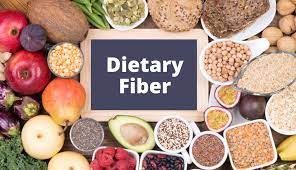Dietary fibers are referred to as supplements that aid in digestion and assist in eliminating bad cholesterol. It helps in maintaining proper health and also promotes weight loss. Dietary fibers are extracted from fruits, grains, cereals, and vegetables. However, this can also be extracted from animals. Some properties like fiber enhancement without sacrificing taste, digestive tolerance, consumer-friendly, clean labeling, exceptional stability, and texture along with ease of formulation are also making these dietary fibers highly popular among people.
The global dietary fibers market is highly driven by surging demands for fiber supplements owing to the growing awareness among people for a healthy lifestyle. The growth in consciousness can be attributed to the growing cases of diabetes, cancer, and heart disease globally. According to research by the National Institutes of Health, over 60 to 70 million people in America face different digestive health issues. In addition, as per the Harvard School of Public Health, children and adults need 20 to 30 grams of dietary fiber each day. It is said that consumption of these dietary fibers reduces the risk of constipation, ventricle disease, and diabetes.
Hence, the high nutritional supplement demand from the young generation globally is likely to register significant growth in the global dietary fibers market over the forecast period. The constant increase in the geriatric population is likely to further augment the demand for dietary fibers globally. However, the fortification of soluble dietary fibers particularly in the food and beverage sector is also likely to uptake in demand in the forthcoming years. Some of the vital soluble fibers extracted from grains include arabinoxylans, pentose, beta-glucan, barley, rye, and wheat. The favorite demographic landscape among both the geriatric and young population to see healthy substitutes in terms of supplements and diets to keep them healthy and prevent diseases is likely to proliferate the business opportunity over the forecast period.
The global dietary fibers market can be segmented into application, product, raw material, and region.
By application, the market can be segmented into animal feed, pharmaceutical, food & beverage, and others.
By product, the market can be segmented into insoluble and soluble dietary fibers. The insoluble dietary fibers segment can further be bifurcated into the wheat fiber, oat bran, lignin, chitin, hemicellulose, cellulose, and others. The soluble dietary fiber segment can further be bifurcated into corn fibers, beta-glucan, pectin, inulin, and others.
By raw material, the market can be segmented into nuts & seeds, legume seeds, grains, fruits, and vegetables.
North America accounts for the largest share in the global dietary fibers market due to the high prevalence of various health disorders including diabetes, heart disease, and cancer. Furthermore, the constantly growing geriatric population in the region is likely to pose huge demand for dietary fibers in the forthcoming years.
Asia Pacific is expected to witness a significant growth rate in forthcoming years owing to the growing disposable income of the people in the region.
Get Free Research Report Sample PDF – https://www.zionmarketresearch.com/requestbrochure/dietary-fibers-market
Some of the significant players in the global dietary fibers market are Grain Millers Inc, Lonza Group, KFSU Ltd, SAS Nexira, Grain Processing Corporation, Archer Daniels Midland Co., SunOpta, Ingredion, Cargill Inc, Roquette Freres, and Tate & Lyle. To cite, Cargill, Inc. in October 2019 invested over USD 35 million in Europe. The initiate was aimed to proliferate its portfolio by adding soluble dietary fibers to its current product portfolio of sweeteners, starches, and texturizers.
Read more – Artificial Intelligence In Transportation Market
Read also – Artificial Intelligence In Marketing Market
